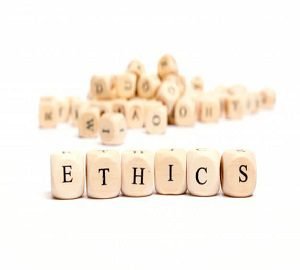Draft Competition
There is a competition for drafts when several articles are written on the basis of one study, but two or more authors are involved. The result will be that the authenticity of the study is diminished and the subject of copyright may be lost. When a scientific content has been published in several journals, if the statistical analysis method is all the same, the publication of these articles is immoral. But if the method of statistical analysis is different, it can be published according to the rules and guidelines of scientific journals.
Copyright Infringement
Some scientific journals while submitting require the authors to agree not to use the article without the permission of the publisher. Moreover, the authors even need permission from the journal to publish a part of the article (for example, to publish some common figures and tables). Scientific journals should also be sure that if the author of an article signs the copyright for the journal publisher, then he/she should no longer publish the titles or parts of the article elsewhere without the permission of the publisher. Most of the authors are not aware of this issue, so it is important for the scientific journal to ask the authors if the article has already been published elsewhere or presented at a scientific conference. It is necessary for the scientific journal to inform the authors of these regulations with a request form for the authors’ permission to know that the author is interested in any publication. The authors should know that the permission of the publisher should be obtained for any publication.
Conflicts of interest
Conflicts of interest for the editorial staff, reviewers, or staff of a scientific journal can arise when there are personal relationships and academic competitions with financial relationships between them and drafters of articles. This can affect negatively the way they judge. The editor in chief should always request authors to inform non-conflict of interests outside the articles to editorial team. Sometimes a manuscript may be sent to the journal by a member of the editorial board, in this case that person should not comment on that article and should be Evaluated by other members.
The scientific journal should have clear guidelines for dealing with such events, and whenever there is a doubt that conflicts of interest may endanger the ethical standards of the journal, the scientific journal should treat it according to the guidelines. A number of scientific journals refuse to submit articles by editorial staff and reject them in the first step, and the article is rejected if it is submitted by the editorial board. But some scientific journals may encourage editorial staff to send their best articles to the journal. However, in order to avoid bias, scientific journals should have explicit guidelines for such drafts to ensure the readers to be aware that the decision to publish an article is based on the scientific merit of the article, not on the basis of unscientific communication between the scientific journal staff.
Privacy
Draft articles or parts of it with the comments of the reviewers should be out of the reach of the irresponsible individuals. For example, a reviewer may sometimes use the data from an unpublished article for his or her own article. In this regard, the journal should have strict guidelines regarding the privacy of the scientific journal staff to ensure that the reviewers are aware of all their ethical responsibilities for the authors of the articles. However, there should also be guidelines in dealing with this violation in the scientific journal.
Ethics and sponsors or owners of scientific journals
Sponsorship organizations for scientific journals should not interfere with the independence of the editor-in-chief of the journal and scientific content. The editor-in-chief should be aware of this right regarding independence from the beginning.
Ethics and Advertisements
Many journals accept advertisements for publication, and it is necessary for the journal to accept them to continue its work. However, these advertisements should not influence the decisions of the editorial staff. In a biomedical scientific journal, advertising is often conducted by pharmaceutical companies for their new products. A scientific journal should have guidelines on how to accept advertisements, and the editor should make sure that all ethical standards are met in this regard. The issues to be considered in preparing the guidelines for accepting advertisements are as follows:
- Advertising on a medication product proven to be harmful should not be carried out.
- Scientific journal advertisements should not be monopolized by one or two large companies so that the readers will interpret that the company affects the editorial board and there is bias in journal content.
- There is no need to print advertisements between articles; it is best to print them at the beginning or end of the journal because the readers assume that the article confirms the medication product listed nearby.
- The editorial board should be aware that there is be no exaggeration in advertisements and no improper claims in the articles. Advertisements should consist of the fact; otherwise, they should not be published.

1 thought on “Publication Ethics-(Part3)”